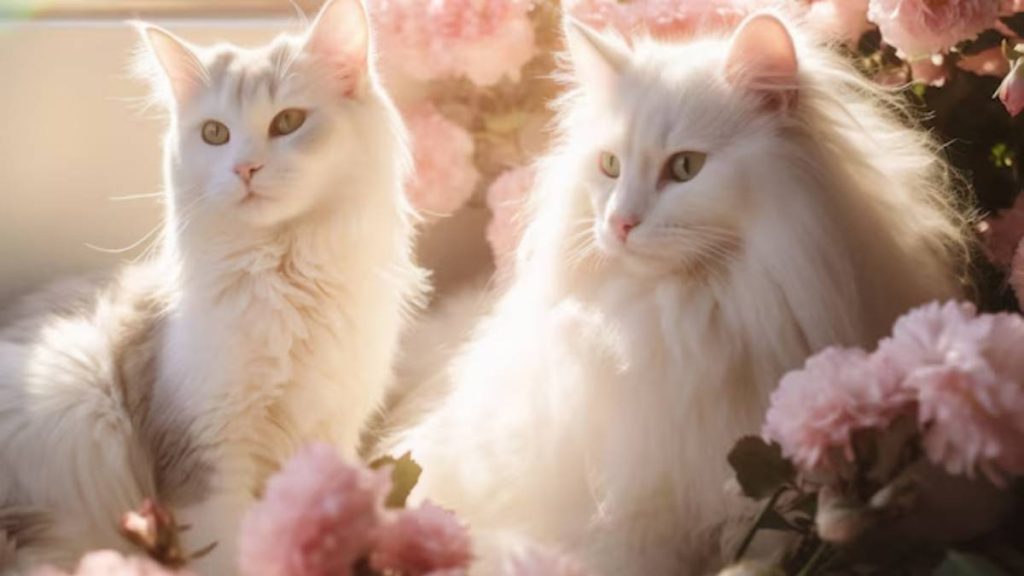If you’re someone who adores fluffy, adorable, and truly royal-looking pets, the Persian cat may just steal your heart. As a long-time cat owner myself, I can say there’s nothing quite like the quiet charm and elegance of this charming feline. These beauties have been cherished for centuries, with their origins tracing back to the deserts of Persia and Iran. Their round, flat faces, flowing coats, and sweet personalities give them an unmistakable presence.
From Queen Victoria owning two Persians to their show-winning appearance in 1871, these long-haired companions have won the hearts of cat-lovers and historians alike. As Certified Feline Behavior Consultants (CFBC) like Maggie Shuter would agree, their behavior is both gentle and affectionate, making them perfect for peaceful homes.
Owning a Persian isn’t just about the cuddles and cuteness; it’s a commitment to grooming, health management, and thoughtful care. These cats may appear a little grumpy, but they are deeply loving, and with the right nutrition and environment, they live happy, healthy lives for years—even into their late teens.
Whether you’re a proud Persian parent or thinking of bringing one home, this guide will help you explore everything from their personalities to practical tips. You’ll soon discover why this sought-after breed remains one of the world’s most popular and special feline companions. Their lavish coats, medium to large-sized bodies, and gentle nature truly make them the ultimate cat royalty.
Why Choose a Persian Cat?
Persian cats are perfect for those seeking a low-energy, affectionate companion. Their beauty and gentle demeanor make them a joy to have at home. However, potential owners should be prepared for the commitment of grooming and care that comes with this breed.
The Rich History of Persian Cats
The history of Persian cats is like flipping through pages of a royal journal. These majestic felines are one of the oldest known cat breeds, tracing back to the 1600s. It’s believed they came from Persia (modern-day Iran) and nearby lands, with long silky coats that caught the attention of early traders. In 1626, the Italian traveler Pietro Della Valle introduced these cats to Europe, starting with Italy. Their unique appearance and luxurious coats quickly gained popularity among aristocrats, especially in England and later the United States.
I find it fascinating how selective breeding over centuries—often involving crosses with the Turkish Angora—led to the refined, rounder faces, short noses, smaller ears, and full coats that we recognize today. During this time, blue and silver varieties became especially prized. The bicolor Persian was a later addition but is now equally beloved. From the palaces of Europe to cozy homes in the States, these cats have always embodied a regal charm that never fades.
Physical Characteristics
Persian cats are renowned for their distinctive physical traits:
-
Official Name: Persian Longhair
Lifespan: 12 to 17 years
Weight: 2.5 to 7 kg
Height: 10 to 15 inches
Colours: Black / White / Red / Blue / Lilac / Chocolate / Cream
Energy Level: Low
Shedding: High
Temperament: Gentle / Playful / Affectionate / Friendly
Intelligence: High
Good With: Cats, Dogs, Children, Families, Seniors
Coat Length: Long
Personality and Temperament
A Persian’s appearance is where the breed truly dazzles. These cats are known for their stocky, well-proportioned bodies, broad chest, and strong legs—each feature contributing to their timeless elegance. Their round faces, flat nose, and large, expressive eyes make them instantly recognizable. Some Persians are even odd-eyed, with different colored eyes, which I find absolutely mesmerizing.
Their plush, flowing coats come in a stunning variety of shades and patterns—from solid, tabby, bicolor, and rare hues like copper, blue, lilac, and chocolate. As a Persian owner, I’ve always admired how selective breeding shaped these unique features. Whether it’s the flat faces or the glossy coat, each Persian carries a signature charm that turns heads. But remember, that beauty comes with responsibility—proper care is essential to keep their looks as regal as their history.
Persian Cat Breed Training
Training a Persian cat is a rewarding process if you understand their calm and laid-back nature. Unlike hyperactive breeds, Persians respond best to routine, patience, and positive reinforcement. I started litter training mine as a kitten using small treats and gentle repetition—it worked like a charm. They’re not into tricks, but they enjoy interactive play and benefit from being taught to use scratching posts early on.
Since they are a selective and sometimes social breed, early socialization is key to building their confidence in new environments. Whether it’s meeting new cats or visitors, Persians adapt better when introduced gently. Remember, consistency in training helps avoid frustration. In my experience, a calm, predictable setting works best, and over time, even the most reserved Persians show their affectionate side.
Persian Cat Grooming
Grooming a Persian is not just care—it’s an act of love. Their long, silky coat demands daily brushing to prevent tangles, debris, and excessive shedding. I use a steel comb, which helps maintain the fur’s softness and keeps it clean. Baths and eye cleaning are also part of the regular routine, especially to prevent tear staining due to their flat faces.
In addition to coat care, don’t overlook dental health—I recommend brushing their teeth or giving dental treats. Nail trimming is vital, too. For ear hygiene, gentle cleaning is essential to avoid buildup. Grooming starts young: I introduced my kittens to combs and baths early, which made them cooperative as adults. Regular grooming is not a chore when you know it keeps your Persian healthy and elegant.
Conclusion
Owning a Persian cat is like living with royalty—wrapped in plush fur, draped across your couch, and gazing at you with large, expressive eyes that seem to know your every mood. Their gentle, affectionate, and playful nature makes them the perfect addition to homes with children, seniors, or even other pets. While they do require daily grooming and some extra care, the reward is a peaceful, loving companion that brings elegance, grace, and a touch of history into your life.
From their origins in ancient Persia to their modern-day role as luxurious lap cats, Persians have captured hearts across centuries. Whether it’s their flowing coat, calm personality, or the quiet way they fit into any environment, one thing is certain—Persian cats are the ultimate fluffy royal companions. If you’re looking for a cat that truly feels like family, with a personality as soft as its fur, the Persian will never disappoint.
Frequently Asked Questions About Persian Cats
Q1: Are Persian cats good with children and other pets?
Yes, Persian cats are gentle, affectionate, and friendly companions that usually get along well with children, dogs, and other cats. They thrive in peaceful households where they are treated with kindness and respect.
Q2: How much grooming does a Persian cat need?
A lot. Daily brushing is essential to prevent mats, tangles, and shedding. You’ll also need to clean their eyes regularly due to tear staining, and trim their nails every 1–2 weeks. Some owners also schedule professional grooming sessions to maintain their Persian’s beautiful coat.
Q3: Do Persian cats have health issues?
Like many purebred cats, Persians are prone to specific health concerns like Polycystic Kidney Disease (PKD), brachycephalic syndrome, progressive retinal atrophy, and dental issues. Regular vet checkups, a balanced diet, and proper grooming can help manage and prevent many of these problems.
Q4: Are Persian cats playful?
Yes, but in short bursts. While not as agile or active as other breeds, Persians enjoy gentle play, especially with interactive toys like feather wands and catnip mice. Most of the time, they prefer lounging in cozy spots or following their humans around the house.
Q5: Can Persian cats live in apartments?
Absolutely! Persian cats are low-energy and adapt well to indoor living, including apartments. Just make sure their space is quiet, safe, and clean. Since they dislike loud environments, calm surroundings help them thrive


